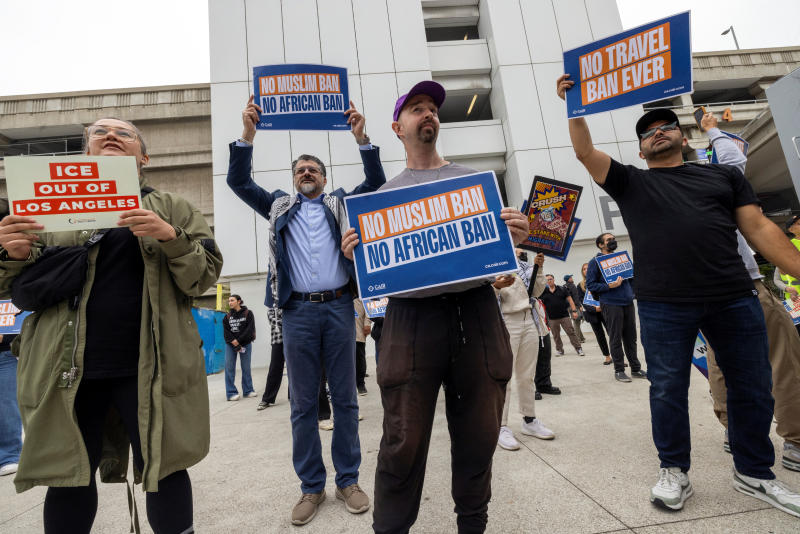President Trump’s administration is taking another hard swing at immigration control, putting 36 more countries on notice under what’s being called Travel Ban 2.0. The move could severely limit entry to the U.S. for millions if these nations don’t comply with new security benchmarks—fast.

What’s New in Travel Ban 2.0?
On June 4, 2025, Trump signed Proclamation 10949, imposing new travel restrictions on 19 countries. Now, a memo from the State Department—signed by Secretary Marco Rubio—has added 36 more to the watchlist. These nations must address security gaps or face full or partial U.S. visa suspensions.
The State Department is demanding improved passport security, better visa tracking, and cooperation in deportations. According to the memo, these countries are either high-risk for overstay violations or aren’t cooperating when the U.S. tries to repatriate individuals. “The world expects the U.S. to take immigration enforcement seriously—and we are,” Rubio said during a recent briefing.
Countries in the Crosshairs
Here’s a breakdown of the regions most affected:
- Africa: Angola, Nigeria, Ethiopia, Ghana, Senegal, Uganda, Zambia, Zimbabwe, Côte d’Ivoire, and more.
- Caribbean: Dominica, Antigua & Barbuda, St. Lucia, St. Kitts & Nevis.
- Central Asia/Pacific: Kyrgyzstan, Tonga, Tuvalu.
While some of these countries had been under review in earlier iterations of Trump’s travel policies, others are new additions—raising alarm bells across embassies worldwide.
Why These Countries?
The memo highlights several failings:
- Weak passport security—making identity fraud easier.
- High visa overstay rates—especially among student and tourist visa holders.
- Poor deportation cooperation—some nations simply won’t take back their nationals when asked.
Security agencies also flagged several for suspected terrorist activity or harboring individuals with anti-American affiliations.
From my time covering immigration policy in D.C., I’ve seen how bureaucratic shortfalls—not malice—often land countries in hot water. But in Trump’s playbook, technicalities are no excuse.

The 60-Day Clock Is Ticking
Affected nations have until mid-August 2025 to improve security standards or face automatic sanctions. This includes potential visa bans or restrictions on immigrant and nonimmigrant categories. “It’s a classic Trump strategy—pressure, public shaming, then punishment,” said an unnamed diplomatic official familiar with the memo.
Human Impact: A Wedding on Hold
In one heartbreaking example, a Sudanese-American couple had to cancel their wedding when the groom was denied entry due to the initial June 4 ban. “We fell in love over WhatsApp during COVID,” said the bride, who lives in Atlanta. “Now, we’re living in limbo again.”
Expert Reactions and Pushback
Many experts argue the expanded ban disproportionately affects developing nations. Critics call it a revival of the original Muslim Ban—but with broader justifications cloaked in technical requirements.
However, the administration insists the criteria are neutral and purely procedural. “This is about protecting the homeland, not punishing countries,” a senior DHS official told Reuters.
What Comes Next?
Countries that fail to make significant progress will likely see restrictions go into effect this summer. The bans could affect travel, study, tourism, and family immigration—sparking diplomatic friction.
Diplomatic cables have already been sent. Some governments are reportedly scrambling to meet U.S. demands.
FAQs
What is Trump’s new travel ban?
It refers to Proclamation 10949 and the State Department’s follow-up memo targeting 36 more countries for possible visa restrictions.
When will the new rules be enforced?
If affected countries don’t improve their compliance by mid-August 2025, restrictions could be enacted immediately.
Can countries avoid the ban?
Yes. Nations that meet U.S. requirements for security and cooperation can be removed from the watchlist before sanctions begin.






